#Prince Louis Ferdinand
Text

Hero's death of Prince Louis Ferdinand of Prussia at Saalfeld on 10 October 1806. Richard Knötel (1857-1914).
A tragic loss to the world, he was a great musician and composer.
youtube
#Music#classical music#Prince Louis Ferdinand#Prussian composers#music during Napoleonic era#I've posted about him before
13 notes
·
View notes
Text
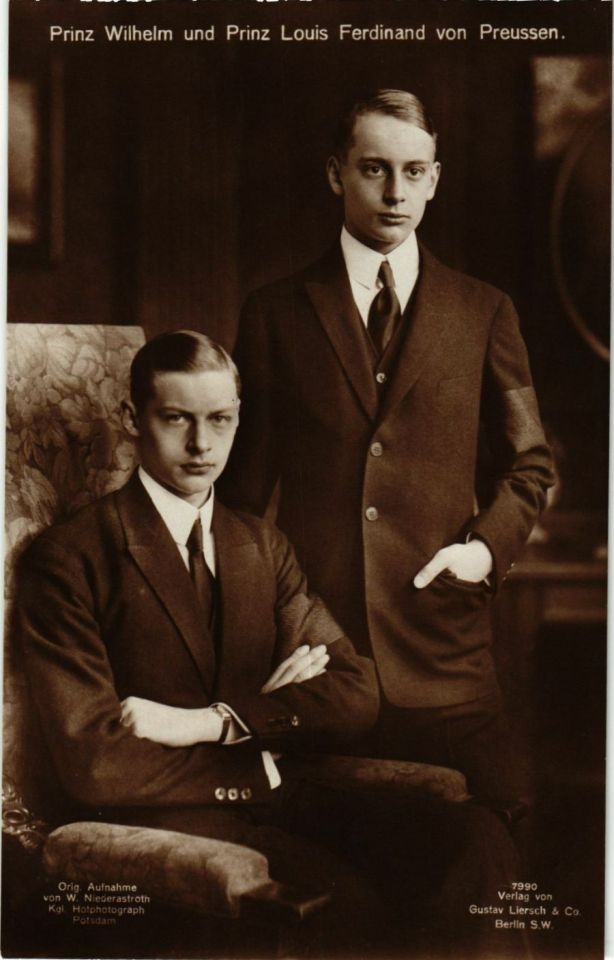
Prince Wilhelm Friedrich Franz Joseph Christian Olaf of Prussia and Prince Louis Ferdinand Victor Eduard Adalbert Michael Hubertus of Prussia
German vintage postcard
#tarjeta#prince wilhelm friedrich franz joseph christian olaf#postkaart#german#adalbert#sepia#prince louis ferdinand#prussia#wilhelm#historic#franz#ferdinand#michael hubertus#photo#eduard#olaf#postal#briefkaart#michael#friedrich#photography#prince#victor#christian#vintage#ephemera#ansichtskarte#old#postcard#hubertus
1 note
·
View note
Text
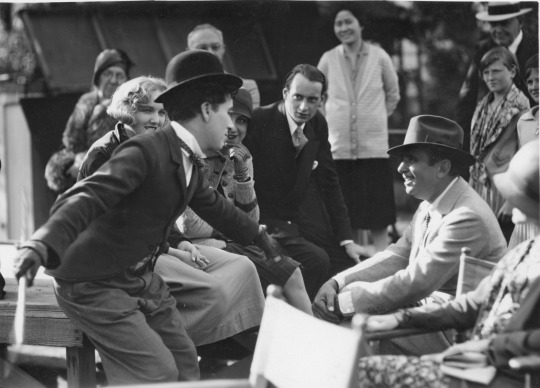

Charlie Chaplin, Douglas Fairbanks and a visiting Prince Louis Ferdinand of Prussia to set of “City Lights”. Top photo to Charlie's left is Virginia Cherrill (blind flower girls).
Prince Louis’ grandfather was Kaiser Wilhelm II and great-grandmother Queen Victoria.
#charlie chaplin#douglas fairbanks#prince louis ferdinand of prussia#set of “city lights”#circa 1929#virginia cherrill
17 notes
·
View notes
Text
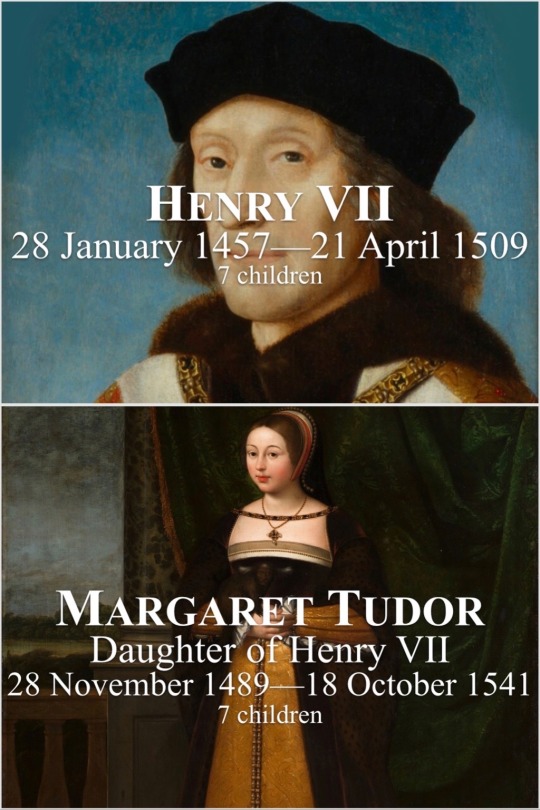



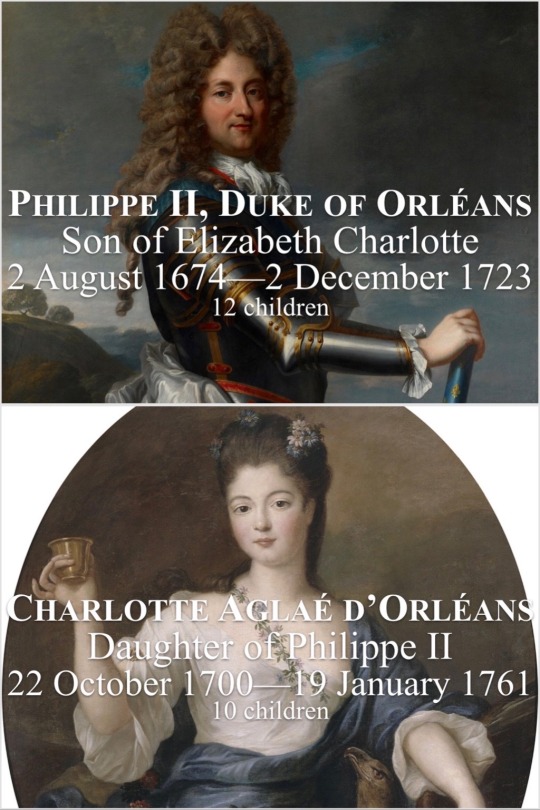
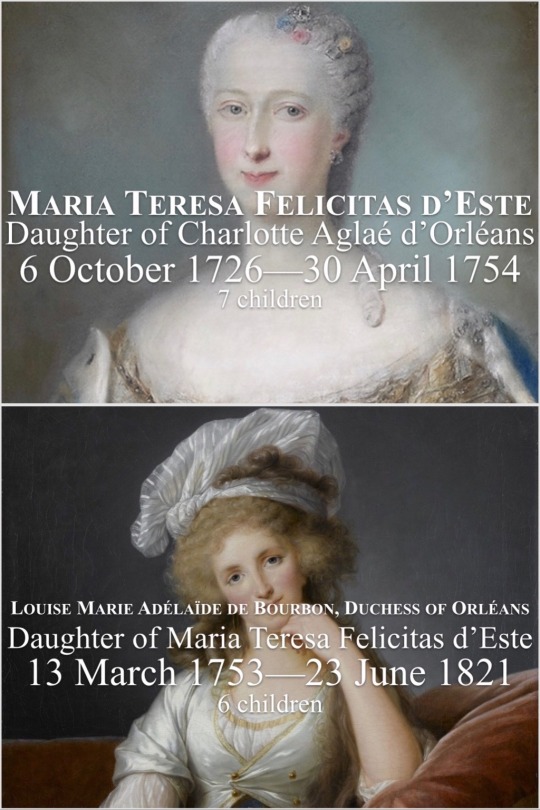




Descendants of the Tudors
#descendants of the tudors#henry vii#margaret tudor#james v#mary queen of scots#james vi and i#elizabeth stuart#charles i louis#elizabeth charlotte madame palatine#philippe ii duke of orléans#charlotte aglaé d’orléans#maria teresa felicitas d’este#louise marie adélaïde de bourbon#louis philippe i#ferdinand philippe duke of orléans#prince philippe count of paris#princess hél��ne of orléans#margherita archduchess of austria este#prince amedeo duke of aosta#prince lorenz#princess laetitia maria
4 notes
·
View notes
Photo

Portrait of Prince Louis Ferdinand of Prussia (1772-1806) by Anton-Karoly Maxiliem Mosnier.
Louis Ferdinand was the third son of Prince August Ferdinand of Prussia and his wife, Elisabeth Louise of Brandenburg-Schwedt (1738-1820), and thus the nephew of King Frederick II the Great.
He possessed great musical talent and was considered a great pianist. He was one of the regulars in the salon of Rahel Varnhagen von Ense, where he used to play the piano for the other guests.
#Anton-Karoly Maxiliem Mosnier#Preußen#haus hohenzollern#prince louis ferdinand of prussia#german aristocracy#kingdom of prussia
15 notes
·
View notes
Note
🧁🍄🍅
Asking three thing because I can hahah
🧁: Which royal deserved better?
This one's difficult!
Queen Marie Antoinette. She was portrayed as greedy and frivolous when in reality her spending habits were mild compared to most of France's previous monarchs, who had already racked up a ton of debt. Louis XVI inherited this debt upon his ascension, and he and Marie were blamed as the country struggled financially. She was only 14 when they got married. And she never actually said 'let them eat cake'! Contrary to popular belief, Marie Antoinette cared immensely about her subjects and donated frequently to charity. After the revolution, Louis and Marie surrendered and went into hiding. They were discovered, put on trial, and publicly guillotined. As a consort, she didn't have any political power and honestly wasn't responsible for any of the country's problems, but she was made a scapegoat. She was only 37 when she died. That's just one year older than Princess Diana was at the time of her tragic death. History books still paint Marie as a villain when in reality she was just a misunderstood young woman.
🍄: Which royal would you go on a date with?
After that serious paragraph about Marie Antoinette's execution, anything I say here is going to sound ridiculous.
Let me just say that Prince Philip was extremely hot when he was younger. Normally I'm not into blond men but he's an exception.
🍅: Which royal family is the saddest in your opinion?
I'm not sure. I don't know too much about most royal families today other than the British one, so I'll go back in history. Does the Austro-Hungarian Empire count? Empress Elisabeth getting stabbed to death by some Italian dude, the Mayerling incident where the heir to the throne and his mistress committed double-suicide, Archduke Franz Ferdinand falling in love with a commoner, Sophie, insisting upon marrying her but then the family treating her horribly, Franz and Sophie getting shot, him begging her not to die for the sake of their children and their deaths less than an hour later, and World War I starting as a result... I feel bad for those people. Yikes.
Thank you for the asks!!!
#that took me soooooo long lol#marie antoinette#franz ferdinand#sophie#prince philip#empress elisabeth of austria#world war one#louis xvi#royal ask game
3 notes
·
View notes
Photo

#Prince Wilhelm of Prussia#Prince Louis Ferdinand of Prussia#Prince Friedrich of Prussia#1910s#hohenzollern#prussian royal family
7 notes
·
View notes
Text
The other day I had an ask about Sophie's marriage to Ferdinand d'Orléans. In the answer I quoted a fragment of an account of the wedding by Prince Hohenlohe-Schilling, which in turn was quoted in Erika Bestenreiner's book about Elisabeth and her siblings. Well I should have digged a bit deeper because it turns out that the Prince's memoirs from which said quote comes from had been translated to English, so we actually have his full account of the celebrations. You can read the whole thing here, which includes tons of biased descriptions of several of the royal guests, but also really bad smell in your guest room, someone looking at you like if you were a scorpion and a mediocre perfomance of one of Verdi's operas during Mass.
STARNBERG, September 28, 1868.
In obedience to the Royal command I came to this place to attend, as Minister of the Household, the marriage of the Duchess Sophie with the Duc d'Alençon, son of the Duc de Nemours. Prince Adalbert and Minister Pfretzschner were appointed to act as witnesses. As the latter preferred to spend the night at Starnberg, I decided to leave yesterday afternoon at half-past two. We arrived at four o'clock, took possession of our rooms at the Hotel am See, and then took a walk, dined at five o'clock and then went down again to the shore of the lake in hopes of seeing something of the illuminations which were to take place nominally in honour of the Czarina of Russia then staying at Berg. But it was nine o'clock, and as nothing happened we preferred not to wait about any longer, and soon got to bed. The fireworks and illuminations would seem to have been very fine, but very little could be seen here. It was Sunday, and consequently a numerous and beery contingent of the general public had taken post under our windows, and kept up a horrible din and shouting. At intervals they sang ''popular airs," but these almost immediately degenerated into mere brutish yells. However, I soon fell asleep, especially as a wholesome storm of rain dispersed the gang. This morning I went to the railway station to see the Empress of Russia depart. Tauffkirchen* was there too, to pay his respects to the Empress. The King accompanied the Empress and travelled some distance with her on the railway in the direction of Munich, but I do not know how far.
At ten we drove over to Possenhofen in my carriage, which I had had brought here yesterday. It was not eleven o'clock yet, so we were taken first to our rooms. In mine there was a villainous bad smell. Soon the time for the wedding ceremony arrived, which took place in a hall of the Castle transformed into a chapel. The guests assembled in the adjoining salon, where a grand piano further blocked the scanty space available. Pfretzschner and I hastened to get ourselves presented to all personages of rank. Besides the family of the Duke Max, Prince Adalbert and Prince Karl were there. The latter bowed to me across the room with a look such as one generally bestows upon a scorpion. Then Count and Countess Trani. The Hereditary Princess Taxis wore a mauve or violet dress trimmed with white. Others present were the Comte de Paris and his brother, the Duc de Chartres, two young and well-built princes, but who give the impression rather of Prussian than of French princes. The Duc de Nemours looked like a French dandy from the Cercle de l'Union. He wore the Order of St. Hubert, as did his son, the bridegroom. The Duc de Nemours recalls the portraits of Henri IV., yet he has a certain look of his own that makes you set him down as a pedant. The young Duc d'Alençon is a handsome young man of a fresh countenance. The Prince de Joinville and his son, the Duc de Penthièvre, have nothing very striking about them. The former is old-looking and bent, too old-looking for his age, dignified and courtly. The Duc de Penthièvre has a yellow, rather Jewish face, and speaks with a drawl, but was very kind and friendly to me. Duke August of Coburg is as tedious as ever. I was interested to become acquainted with his wife, the Princess Clementine, a clever, lively woman. The Princess Joinville, a Brazilian Princess, is rather mummified, with big rolling eyes in a long, pale, wrinkled face. Then there were two daughters of Nemours there too, one grown up, the other a little girl. The ladies were all in "high dresses." The bride in white silk, trimmed with orange blossom, with head-dress of orange blossom and a tulle veil. On the sleeves braids of satin, after the pattern of the Lifeguardsmen's stripes. A lady-in-waiting attached to the Nemours party wore a flame-coloured silk with straw-coloured trimmings. When all were assembled, we proceeded to the chapel. The bridal couple knelt before the altar. Behind them, on the left, Prince Adalbert, behind him we two Ministers, and then behind us the gentlemen of the House of Orleans. On the other side the Duc de Nemours and the Duchess, likewise all the Princesses. Hancberg began the ceremony with a suitable address. Nobody cried, but Duke Max looked rather like it once or twice. The bride appeared extremely self-possessed. Before the "affirmation" the bridegroom first made a bow to his father, and the bride did the same to her parents. The Duchess's "Yes" sounded very much as if she meant "Yes, for my own part," or "For aught I care." I don't wish to be spiteful, but it sounded like that to me. After the wedding, I kissed the Duchess's hand, and congratulated her. She seemed highly gratified and pleased. The pause between the wedding ceremony and the State dinner we spent in our room. I forgot, by-the-by, to say that during the Mass a military band played an accompaniment to the religious ceremony. It began with the overture to one of Verdi's operas, I don't know whether it was Traviata or Trovatore. It was but a mediocre performance, the sort of stuff you hear played at dinners.
The State dinner was held downstairs in two halls. In one sat all Royal personages and myself along with Pfretzchner, in the other the courtiers. The health of the bridal pair was drunk without speechmaking. I sat between the young Princess of Coburg and Duke Ludwig. The dinner was not particularly long, nor was it particularly good either. On rising from table there was some more standing about, and then all the company separated. The Orleans Princes took their departure at once, about half-past four, as did the other Princes. Only the Duc de Nemours stays on till the day after tomorrow with his children.
We drove back to Starnberg in one of the Ducal carriages, from whence we return to-day to Munich by the eight o'clock train.
At dinner the "Wedding Chorus" from Lohengrin was played. It must have been singularly agreeable to the King's ex-fiancée. Another odd coincidence was that the very evening before, the lake and mountains were illuminated (for the Czarina), and the King had to celebrate in this way his erstwhile fiancée's bridal eve.
The Comte de Paris spoke to me about war and peace, and maintains that popular feeling in France is opposed to war. But he said it was difficult to gauge public opinion in France, the Press is so wanting in independence.
He is a sensible, well-meaning man, who would make an excellent Constitutional King of France.
*Count Tauffkirchen was at that time Bavarian Minister at St Petersburg.
#chlodwig prince of hohenlohe-schilling#sophie in bavaria duchesse d'alençon#ferdinand d'orléans duke of alençon#prince louis d'orléans duke of nemours#and many more!#memoirs of prince chlowdig of hohenlohe-schillingsfuerst#house of wittelsbach#house of orléans
6 notes
·
View notes
Text

louis ferdinand, prince of prussia
0 notes
Text
The updated list of nominees so far:
France:
Jean Lannes
Josephine de Beauharnais
Thérésa Tallien
Jean-Andoche Junot
Joseph Fouché
Charles Maurice de Talleyrand
Joachim Murat
Michel Ney
Jean-Baptiste Bernadotte (Charles XIV of Sweden)
Louis-Francois Lejeune
Pierre Jacques Étienne Cambrinne
Napoleon I
Marshal Louis-Gabriel Suchet
Jacques de Trobriand
Jean de dieu soult.
François-Étienne-Christophe Kellermann
Louis Davout
Pauline Bonaparte, Duchess of Guastalla
Eugène de Beauharnais
Jean-Baptiste Bessières
Antoine-Jean Gros
Jérôme Bonaparte
Andre Masséna
England:
Richard Sharpe (The Sharpe Series)
Tom Pullings (Master and Commander)
Arthur Wellesley, 1st Duke of Wellington
Jonathan Strange (Jonathan Strange & Mr. Norrell)
Captain Jack Aubrey (Aubrey/Maturin books)
Horatio Hornblower (the Hornblower Books)
William Laurence (The Temeraire Series)
Austria:
Klemens von Metternich
Friedrich Bianchi, Duke of Casalanza
Franz I/II
Archduke Karl
Marie Louise
Poland:
Wincenty Krasiński
Józef Antoni Poniatowski
Józef Zajączek
Maria Walewska
Russia:
Alexander I Pavlovich
Alexander Andreevich Durov
Prince Andrei (War and Peace)
Pyotr Bagration
Mikhail Miloradovich
Levin August von Bennigsen
Prussia:
Louise von Mecklenburg-Strelitz
Gebard von Blücher
Carl von Clausewitz
Frederick William III
Gerhard von Scharnhorst
Louis Ferdinand of Prussia
Friederike of Mecklenburg-Strelitz
The Netherlands:
Ida St Elme
Wiliam, Prince of Orange
The Papal States:
Pius VII
#napoleonic sexyman tournament#there is something mildly funny about the English being overwhelmingly fictional Englishmen#and Wellington
54 notes
·
View notes
Text
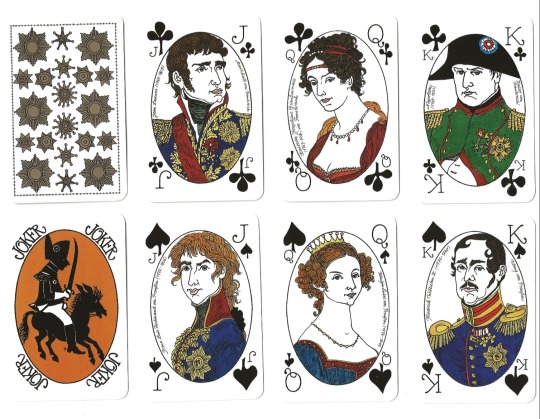

Glaux Verlag Christine Jäger [German publishing house that was based in Jena at the time these were made] Napoleonic Playing Cards
♣️: Marshal Lannes, Empress Josephine, Napoleon
♠️: Prince Louis-Ferdinand of Prussia, Queen Louise, Frederick-William III
♥️: Marshal Kutuzov, Tsarina Elizabeth-Alexeievna, Tsar Alexander I
♦️: Prince Frederick-Louis of Hohenlohe, Princess Louise of Hesse-Darmstadt, Duke Karl August Grand Duke of Saxe-Weimar-Eisenach
#they got the tsarina’s birth year wrong lol#my napoleonic playing cards#tsar alexander#napoleon bonparte#empress josephine#marshal lannes
27 notes
·
View notes
Text

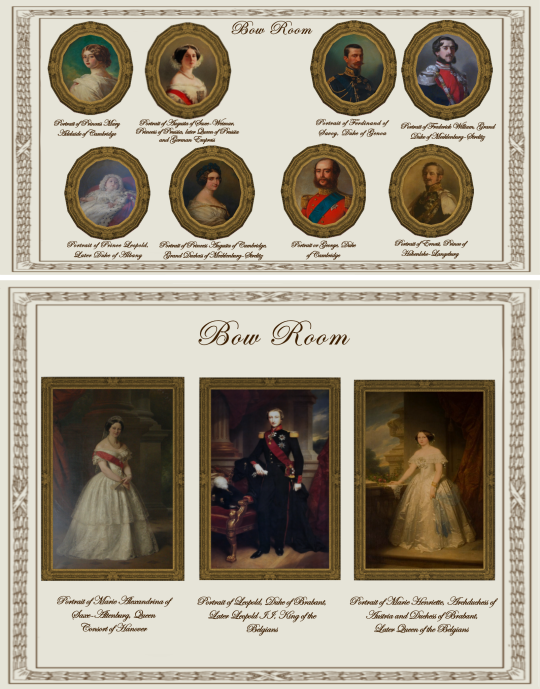
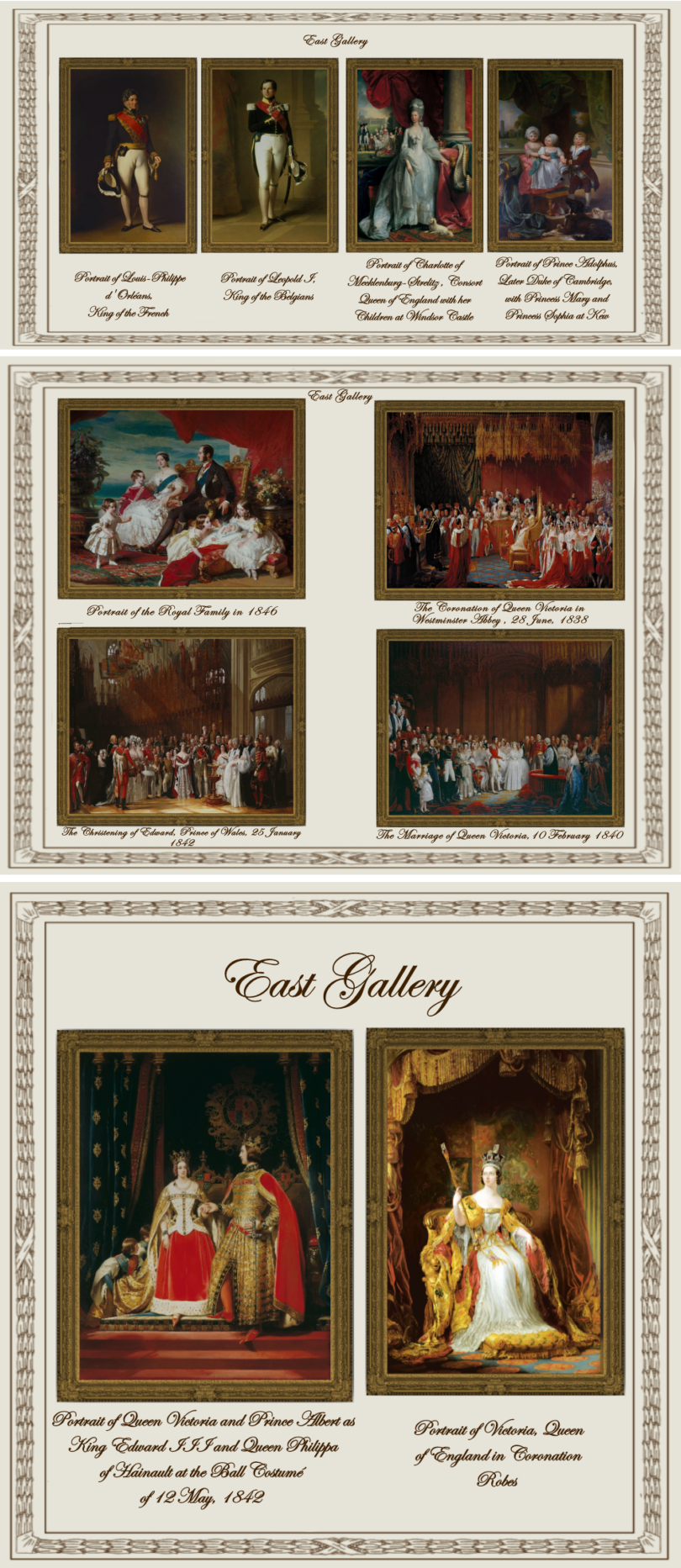
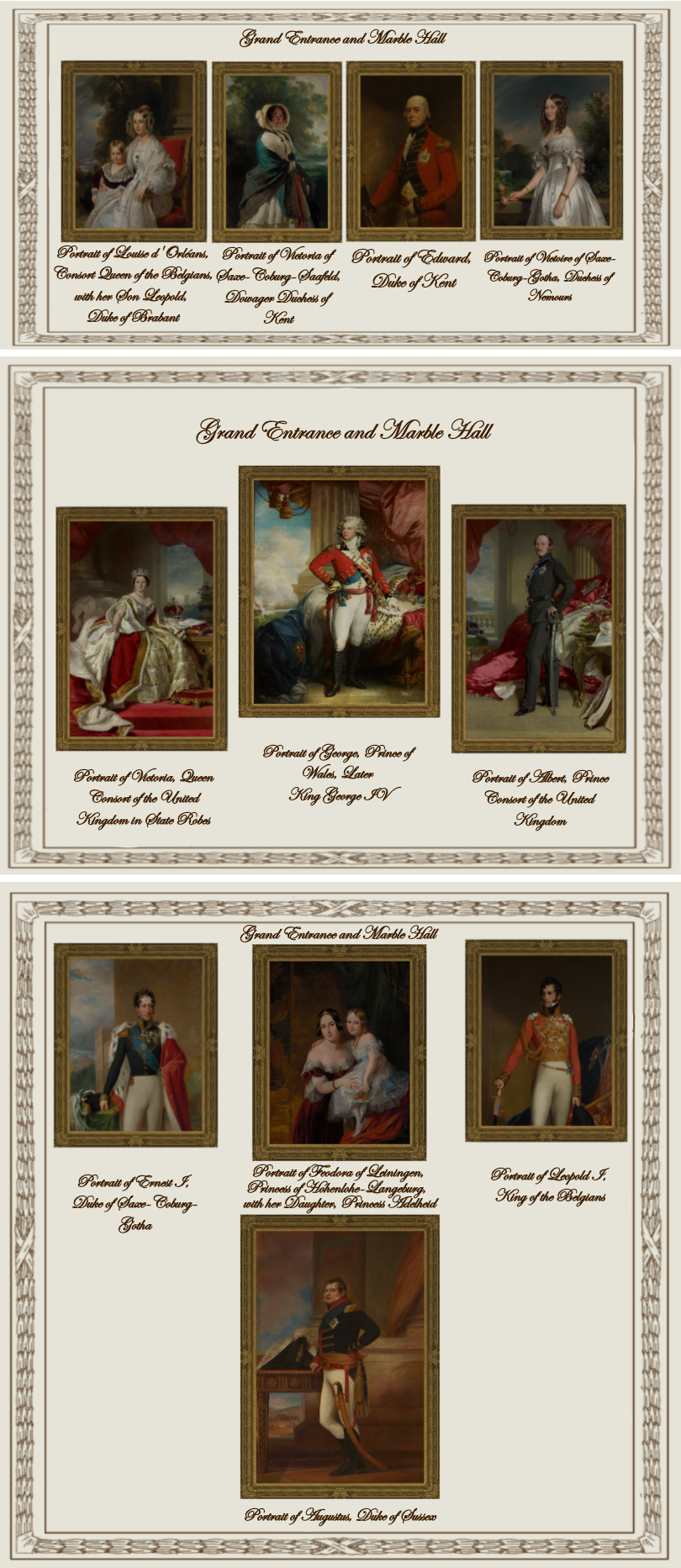

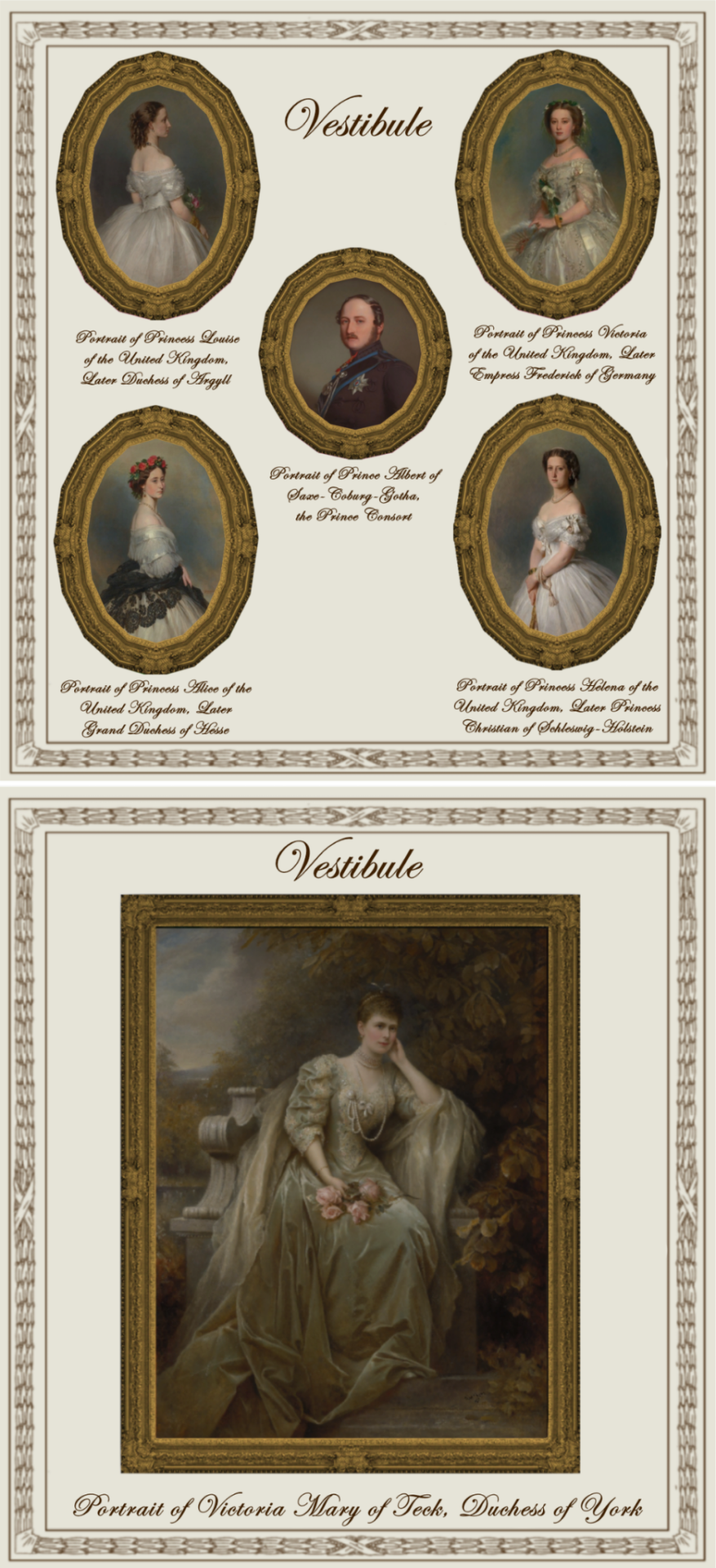


Paintings from Buckingham Palace: part II
A retexture by La Comtesse Zouboff — Original Mesh by @thejim07
Spread among 13 occupied and historic royal residences in the United Kingdom, the collection is owned by King Charles III and overseen by the Royal Collection Trust. The British monarch owns some of the collection in right of the Crown and some as a private individual. It is made up of over one million objects, including 7,000 paintings, over 150,000 works on paper, this including 30,000 watercolours and drawings, and about 450,000 photographs, as well as around 700,000 works of art, including tapestries, furniture, ceramics, textiles, carriages, weapons, armour, jewellery, clocks, musical instruments, tableware, plants, manuscripts, books, and sculptures.
Some of the buildings which house the collection, such as Hampton Court Palace, are open to the public and not lived in by the Royal Family, whilst others, such as Windsor Castle, Kensington Palace and the most remarkable of them, Buckingham Palace are both residences and open to the public.
About 3,000 objects are on loan to museums throughout the world, and many others are lent on a temporary basis to exhibitions.
-------------------------------------------------------
The second part includes paintings displayed in the Ball Supper Room, the Ballroom, the Ballroom Annexe, the Bow Room, the East Gallery, the Grand Entrance and Marble Hall, the Minister's Landing & Staircase, the Vestibule, the Chinese Dining Room and the Balcony Room.
This set contains 57 paintings and tapestries with the original frame swatches, fully recolourable. They are:
Ball Supper Room (BSR):
Portrait of King George III of the United Kingdom (Benjamin West)
Ballroom (BR):
The Story of Jason: The Battle of the Soldiers born of The Serpent's Teeth (the Gobelins)
The Story of Jason: Medea Departs for Athens after Setting Fire to Corinth (the Gobelins)
Ballroom Annexe (BAX):
The Apotheosis of Prince Octavius (Benjamin West)
Bow Room (BWR):
Portrait of Princess Mary Adelaide of Cambridge (William Corden the Younger)
Portrait of Princess Augusta of Cambridge, Grand Duchess of Mecklenburg-Strelitz (Alexander Melville)
Portrait or George, Duke of Cambridge (William Corden the Younger)
Portrait of Frederick William, Grand Duke of Mecklenburg-Strelitz (Franz Xaver Winterhalter)
Portrait of Augusta of Saxe-Weimar, Princess of Prussia, later Queen of Prussia and German Empress (Franz Xaver Winterhalter)
Portrait of Prince Leopold, Later Duke of Albany (Franz Xaver Winterhalter)
Portrait of Ernest, Prince of Hohenlohe-Langeburg (Franz Xaver Winterhalter)
Portrait of Ferdinand of Savoy, Duke of Genoa (Eliseo Sala)
Portrait of Marie Alexandrina of Saxe-Altenburg, Queen Consort of Hanover (Carl Ferdinand Sohn)
Portrait of Leopold, Duke of Brabant, Later Leopold II, King of the Belgians (Nicaise de Keyser)
Portrait of Marie Henriette, Archduchess of Austria and Duchess of Brabant, Later Queen of the Belgians (Nicaise de Keyser)
East Gallery (EG):
Portrait of Leopold I, King of the Belgians (Franz Xaver Winterhalter)
Portrait of Victoria, Queen of England in Coronation Robes (Sir George Hayter)
Portrait of Louis-Philippe d'Orléans, King of the French (Franz Xaver Winterhalter)
Portrait of Charlotte of Mecklenburg-Strelitz, Consort Queen of England with her Children at Windsor Castle (Benjamin West)
Portrait of Prince Adolphus, later Duke of Cambridge, With Princess Mary and Princess Sophia at Kew (Benjamin West)
The Coronation of Queen Victoria in Westminster Abbey, 28 June, 1838. (Sir George Hayter)
The Christening of Edward, Prince of Wales 25 January, 1842 (Sir George Hayter)
The Marriage of Queen Victoria, 10 February, 1840 (Sir George Hayter)
Portrait of the Royal Family in 1846 (Franz Xaver Winterhalter)
Portrait of Queen Victoria and Prince Albert as King Edward III and Queen Philippa of Hainault at the Ball Costumé of 12 May, 1842 (Sir Edwin Landseer)
Grand Entrance and Marble Hall (GEMH):
Portrait of Edward, Duke of Kent (John Hoppner)
Portrait of Ernest I, Duke of Saxe-Coburg-Gotha (George Dawe)
Portrait of Victoria of Saxe-Coburg-Saafeld, Dowager Duchess of Kent (Franz Xaver Winterhalter)
Portrait of Albert, Prince Consort of the United Kingdom (Franz Xaver Winterhalter)
Portrait of Victoria, Queen Consort of the United Kingdom in State Robes (Franz Xaver Winterhalter)
Portrait of Louise d'Orléans, Consort Queen of the Belgians, with her Son Leopold, Duke of Brabant (Franz Xaver Winterhalter)
Portrait of Feodora of Leiningen, Princess of Hohenlohe-Langeburg, with her Daughter, Princess Adelheid (Sir George Hayter)
Portrait of George, Prince of Wales, Later King George IV (Mather Byles Brown)
Portrait of Victoire of Saxe-Coburg-Gotha, Duchess of Nemours (Franz Xaver Winterhalter)
Portrait of Augustus, Duke of Sussex (Domenico Pellegrini)
Portrait of Leopold I, King of the Belgians (William Corden the Younger)
Minister's Landing and Staircase (MLS):
Portrait of George, Prince of Wales in Garther Robes (John Hoppner)
The Loves of the Gods: The Rape of Europa (the Gobelins)
The Loves of the Gods: The Rape of Proserpine (The Gobelins)
Vestibule (VL):
Portrait of Prince Albert of Saxe-Coburg-Gotha, the Prince Consort (Unknown Artist from the German School)
Portrait of Princess Alice of the United Kingdom, Later Grand Duchess of Hesse (Franz Xaver Winterhalter)
Portrait of Princess Helena of the United Kingdom, Later Princess Christian of Schleswig-Holstein (Franz Xaver Winterhalter)
Portrait of Princess Louise of the United Kingdom, Later Duchess of Argyll (Franz Xaver Winterhalter)
Portrait of Princess Victoria of the United Kingdom, Later Empress Frederick of Germany (Franz Xaver Winterhalter)
Portrait of Victoria Mary of Teck, Duchess of York (Edward Hughes)
Chinese Dining Room or Pavilion Breakfast Room(CDR):
Set of Four Painted Chinoiserie Wall panels I (Robert Jones)
Set of Four Painted Chinoiserie Wall panels II (Robert Jones)
Set of Four Painted Chinoiserie Wall panels III (Robert Jones)
Set of Four Painted Chinoiserie Wall panels IV (Robert Jones)
Balcony Room or Centre Room (BR):
Chinoiserie Painted Panel I (Robert Jones)
Chinoiserie Painted Panel II (Robert Jones)
Chinoiserie Painted Panel III (Robert Jones)
Chinoiserie Painted Panel IV (Robert Jones)
EXTRAS! (E):
I decided to add the rest of the tapestries from the story of Jason (wich hangs in the Grand Reception Room at Windsor Castle) and (with Jim's permission) added the original mesh for paintings number 2,3,4 & 5 from the Vestibule (seen here and here) wich was never published. These items are:
The Story of Jason: Jason Pledges his Faith to Medea (the Gobelins)
The Story of Jason: Jason Marries Glauce, Daughter of Creon, King of Thebes (the Gobelins)
The Story of Jason: The Capture of the Golden Fleece (the Gobelins)
The Story of Jason: The Poisoning of Glauce and Creon by Medea's Magic Robe (the Gobelins)
Sea Melodies (Herbert James Draper) (made by TheJim07)
-------------------------------------------------------
Found under decor > paintings for:
500§ (BWR: 1,2,3,4,5,6, & 8 |VL: 1)
570§ (VL: 2,3,4 & 5 |E: 5)
1850§ (GEMH: 1 & 3)
2090§ (GEMH: 2,6,7, 9 & 11)
3560§ (GEMH: 4,5 & 10 |BSR: 1 |EG: 1,2,3,4 & 5 |MLS: 1 |BAX: 1)
3900§ (CDR: 1,2,3 & 4 |BR: 1,2,3 & 4 |EG: 10 |VL: 6 |GEMH: 8)
4470§ (MLS: 2 |E: 1)
6520§ (BR 1 & 2| MLS: 3 |EG: 6,7,8 & 9 |BR: 1 & 2 |E: 2,3 & 4)
Retextured from:
"Saint Mary Magdalene" (BWR: 1,2,3,4,5,6, & 8 |VL: 1) found here.
"Sea Melodies" (VL: 2,3,4 & 5 |E: 5)
"The virgin of the Rosary" (GEMH: 1 & 3) found here.
"Length Portrait of Mrs.D" (GEMH: 4,5 & 10 |BSR: 1 |EG: 1,2,3,4 & 5 |MLS: 1 |BAX: 1) found here
"Portrait of Maria Theresa of Austria and her Son, le Grand Dauphin" (CDR: 1,2,3 & 4 |BR: 1,2,3 & 4 |EG: 10 |VL: 6 |GEMH: 8) found here
"Sacrifice to Jupiter" (MLS: 2 |E: 1) found here
"Vulcan's Forge" (BR 1 & 2| MLS: 3 |EG: 6,7,8 & 9 |BR: 1 & 2 |E: 2,3 & 4) found here
(you can just search for "Buckingham Palace" using the catalog search mod to find the entire set much easier!)
Disclaimer!
Some paintings in the previews look blurry but in the game they're very high definition, it's just because I had to add multiple preview pictures in one picture to be able to upload them all! Also sizes shown in previews are not accurate to the objects' actual sizes in most cases.

Drive
(Sims3pack | Package)
(Useful tags below)
@joojconverts @ts3history @ts3historicalccfinds @deniisu-sims @katsujiiccfinds @gifappels-stuff
-------------------------------------------------------
#the sims 3#ts3#sims 3#s3cc#sims 3 cc#sims 3 download#sims 3 decor#edwardian#victorian#regency#georgian#buckingham#buckingham palace#wall decor#sims 3 free cc#large pack#this was exhausting
48 notes
·
View notes
Text
(Mostly) Lost, but Not Forgotten: Omar Khayyam (1923) / A Lover’s Oath (1925)

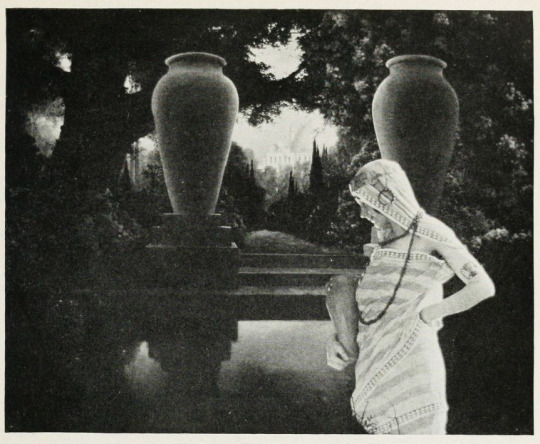
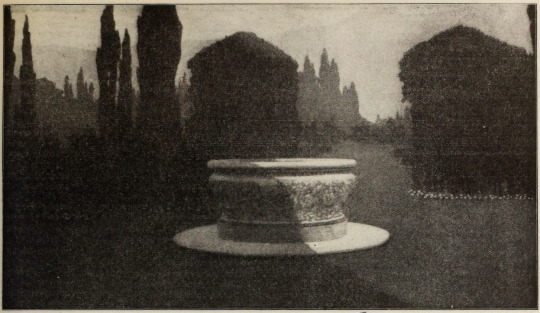
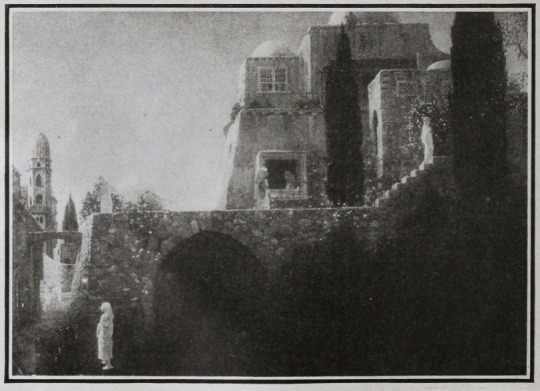
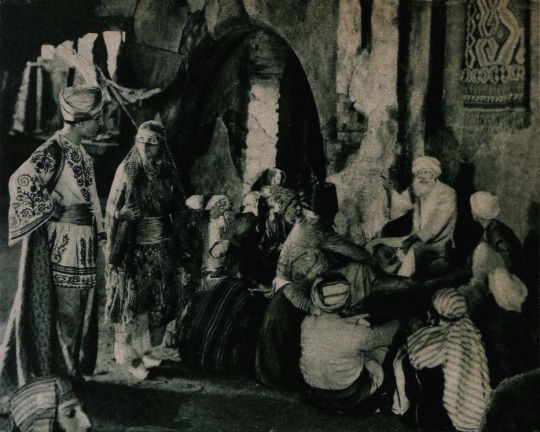
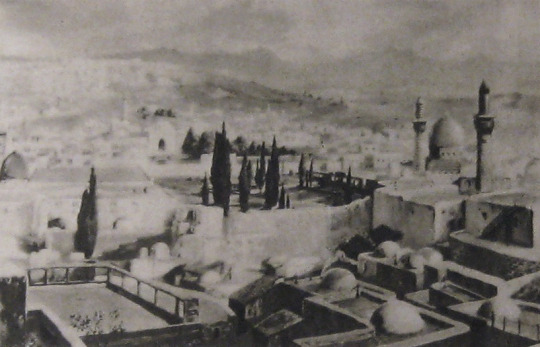

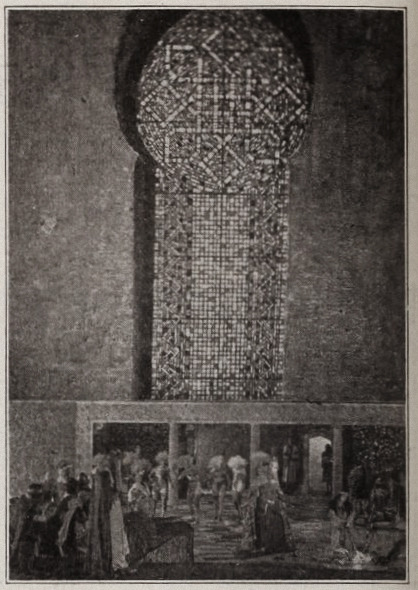
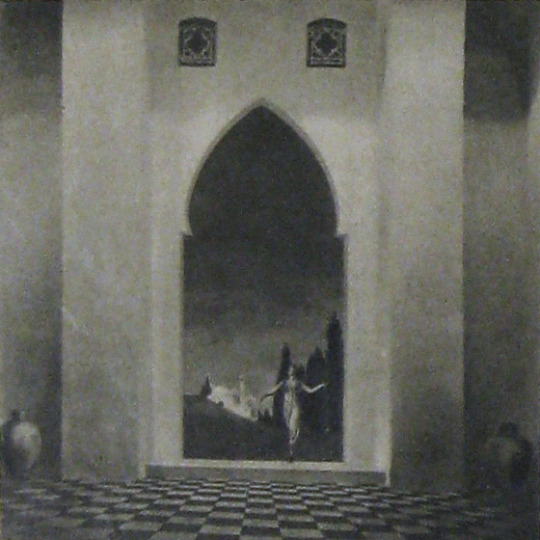


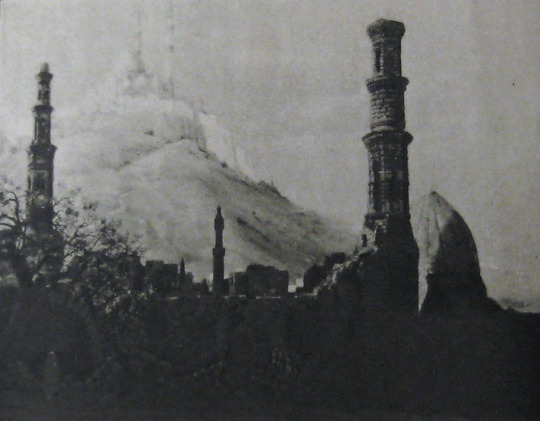
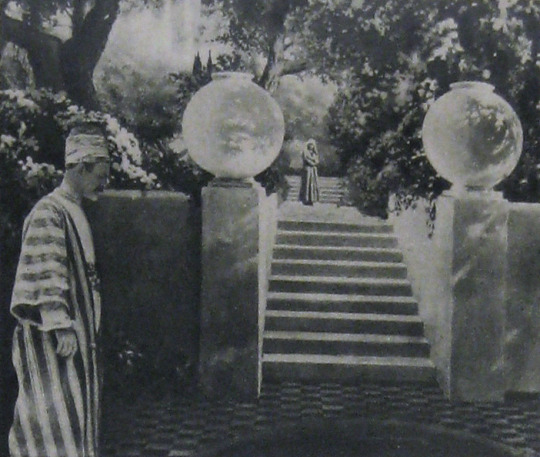
Alternate Titles: The Rubaiyat of Omar Khayyam, The Rubaiyat, Omar Khayyam, Omar
Direction: Ferdinand Pinney Earle; assisted by Walter Mayo
Scenario: Ferdinand P. Earle
Titles: Marion Ainslee, Ferdinand P. Earle (Omar), Louis Weadock (A Lover’s Oath)
Inspired by: The Rubaiyat of Omar Khayyam, as edited & translated by Edward FitzGerald
Production Manager: Winthrop Kelly
Camera: Georges Benoit
Still Photography: Edward S. Curtis
Special Photographic Effects: Ferdinand P. Earle, Gordon Bishop Pollock
Composer: Charles Wakefield Cadman
Editors: Arthur D. Ripley (The Rubaiyat of Omar Khayyam version), Ethel Davey & Ferdinand P. Earle (Omar / Omar Khayyam, the Director’s cut of 1922), Milton Sills (A Lover’s Oath)
Scenic Artists: Frank E. Berier, Xavier Muchado, Anthony Vecchio, Paul Detlefsen, Flora Smith, Jean Little Cyr, Robert Sterner, Ralph Willis
Character Designer: Louis Hels
Choreography: Ramon Novarro (credited as Ramon Samaniegos)
Technical Advisors: Prince Raphael Emmanuel, Reverend Allan Moore, Captain Dudley S. Corlette, & Captain Montlock or Mortlock
Studio: Ferdinand P. Earle Productions / The Rubaiyat, Inc. (Production) & Eastern Film Corporation (Distribution, Omar), Astor Distribution Corporation [States Rights market] (Distribution, A Lover’s Oath)
Performers: Frederick Warde, Edwin Stevens, Hedwiga Reicher, Mariska Aldrich, Paul Weigel, Robert Anderson, Arthur Carewe, Jesse Weldon, Snitz Edwards, Warren Rogers, Ramon Novarro (originally credited as Ramon Samaniegos), Big Jim Marcus, Kathleen Key, Charles A. Post, Phillippe de Lacy, Ferdinand Pinney Earle
Premiere(s): Omar cut: April 1922 The Ambassador Theatre, New York, NY (Preview Screening), 12 October 1923, Loew’s New York, New York, NY (Preview Screening), 2 February 1923, Hoyt’s Theatre, Sydney, Australia (Initial Release)
Status: Presumed lost, save for one 30 second fragment preserved by the Academy Film Archive, and a 2.5 minute fragment preserved by a private collector (Old Films & Stuff)
Length: Omar Khayyam: 8 reels , 76 minutes; A Lover’s Oath: 6 reels, 5,845 feet (though once listed with a runtime of 76 minutes, which doesn’t line up with the stated length of this cut)
Synopsis (synthesized from magazine summaries of the plot):
Omar Khayyam:
Set in 12th century Persia, the story begins with a preface in the youth of Omar Khayyam (Warde). Omar and his friends, Nizam (Weigel) and Hassan (Stevens), make a pact that whichever one of them becomes a success in life first will help out the others. In adulthood, Nizam has become a potentate and has given Omar a position so that he may continue his studies in mathematics and astronomy. Hassan, however, has grown into quite the villain. When he is expelled from the kingdom, he plots to kidnap Shireen (Key), the sheik’s daughter. Shireen is in love with Ali (Novarro). In the end it’s Hassan’s wife (Reicher) who slays the villain then kills herself.
A Lover’s Oath:
The daughter of a sheik, Shireen (Key), is in love with Ali (Novarro), the son of the ruler of a neighboring kingdom. Hassan covets Shireen and plots to kidnap her. Hassan is foiled by his wife. [The Sills’ edit places Ali and Shireen as protagonists, but there was little to no re-shooting done (absolutely none with Key or Novarro). So, most critics note how odd it is that all Ali does in the film is pitch woo, and does not save Shireen himself. This obviously wouldn’t have been an issue in the earlier cut, where Ali is a supporting character, often not even named in summaries and news items. Additional note: Post’s credit changes from “Vizier” to “Commander of the Faithful”]
Additional sequence(s) featured in the film (but I’m not sure where they fit in the continuity):
Celestial sequences featuring stars and planets moving through the cosmos
Angels spinning in a cyclone up to the heavens
A Potters’ shop sequence (relevant to a specific section of the poems)
Harem dance sequence choreographed by Novarro
Locations: palace gardens, street and marketplace scenes, ancient ruins


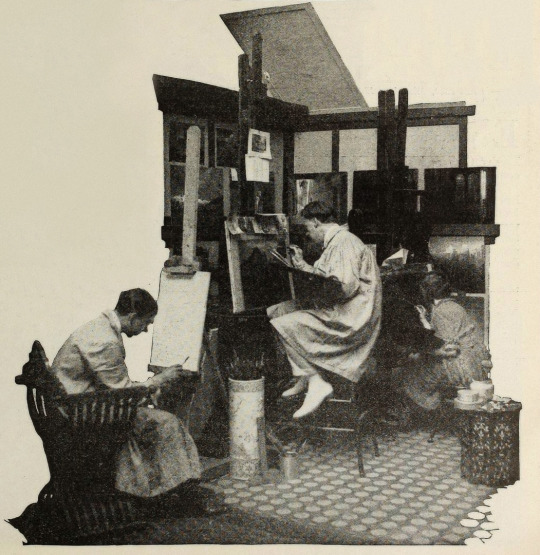


Points of Interest:
“The screen has been described as the last word in realism, but why confine it there? It can also be the last word in imaginative expression.”
Ferdinand P. Earle as quoted in Exhibitors Trade Review, 4 March 1922
The Rubaiyat of Omar Khayyam was a massive best seller. Ferdinand Pinney Earle was a classically trained artist who studied under William-Adolphe Bougueraeu and James McNeill Whistler in his youth. He also had years of experience creating art backgrounds, matte paintings, and art titles for films. Charles Wakefield Cadman was an accomplished composer of songs, operas, and operettas. Georges Benoit and Gordon Pollock were experienced photographic technicians. Edward S. Curtis was a widely renowned still photographer. Ramon Novarro was a name nobody knew yet—but they would soon enough.
When Earle chose The Rubaiyat as the source material for his directorial debut and collected such skilled collaborators, it seemed likely that the resulting film would be a landmark in the art of American cinema. Quite a few people who saw Earle’s Rubaiyat truly thought it would be:
William E. Wing writing for Camera, 9 September 1922, wrote:
“Mr. Earle…came from the world of brush and canvass, to spread his art upon the greater screen. He created a new Rubaiyat with such spiritual colors, that they swayed.”
…
“It has been my fortune to see some of the most wonderful sets that this Old Earth possesses, but I may truly say that none seized me more suddenly, or broke with greater, sudden inspiration upon the view and the brain, than some of Ferdinand Earle’s backgrounds, in his Rubaiyat.
“His vision and inspired art seem to promise something bigger and better for the future screen.”
As quoted in an ad in Film Year Book, 1923:
“Ferdinand Earle has set a new standard of production to live up to.”
Rex Ingram
“Fifty years ahead of the time.”
Marshall Neilan
The film was also listed among Fritz Lang’s Siegfried, Chaplin’s Gold Rush, Fairbanks’ Don Q, Lon Chaney’s Phantom of the Opera and The Unholy Three, and Erich Von Stroheim’s Merry Widow by the National Board of Review as an exceptional film of 1925.
So why don’t we all know about this film? (Spoiler: it’s not just because it’s lost!)
The short answer is that multiple dubious legal challenges arose that prevented Omar’s general release in the US. The long answer follows BELOW THE JUMP!
Earle began the project in earnest in 1919. Committing The Rubaiyat to film was an ambitious undertaking for a first-time director and Earle was striking out at a time when the American film industry was developing an inferiority complex about the level of artistry in their creative output. Earle was one of a number of artists in the film colony who were going independent of the emergent studio system for greater protections of their creative freedoms.
In their adaptation of The Rubaiyat of Omar Khayyam, Earle and Co. hoped to develop new and perfect existing techniques for incorporating live-action performers with paintings and expand the idea of what could be accomplished with photographic effects in filmmaking. The Rubaiyat was an inspired choice. It’s not a narrative, but a collection of poetry. This gave Earle the opportunity to intersperse fantastical, poetic sequences throughout a story set in the lifetime of Omar Khayyam, the credited writer of the poems. In addition to the fantastic, Earle’s team would recreate 12th century Persia for the screen.
Earle was convinced that if his methods were perfected, it wouldn’t matter when or where a scene was set, it would not just be possible but practical to put on film. For The Rubaiyat, the majority of shooting was done against black velvet and various matte photography and multiple exposure techniques were employed to bring a setting 800+ years in the past and 1000s of miles removed to life before a camera in a cottage in Los Angeles.
Note: If you’d like to learn a bit more about how these effects were executed at the time, see the first installment of How’d They Do That.
Unfortunately, the few surviving minutes don’t feature much of this special photography, but what does survive looks exquisite:

see all gifs here
Earle, knowing that traditional stills could not be taken while filming, brought in Edward S. Curtis. Curtis developed techniques in still photography to replicate the look of the photographic effects used for the film. So, even though the film hasn’t survived, we have some pretty great looking representations of some of the 1000s of missing feet of the film.
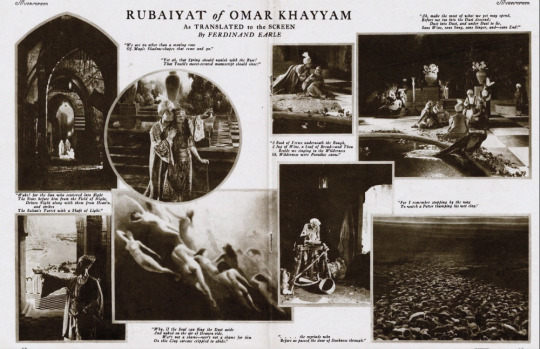
Nearly a year before Curtis joined the crew, Earle began collaboration with composer Charles Wakefield Cadman. In another bold creative move, Cadman and Earle worked closely before principal photography began so that the score could inform the construction and rhythm of the film and vice versa.
By the end of 1921 the film was complete. After roughly 9 months and the creation of over 500 paintings, The Rubaiyat was almost ready to meet its public. However, the investors in The Rubaiyat, Inc., the corporation formed by Earle to produce the film, objected to the ample reference to wine drinking (a comical objection if you’ve read the poems) and wanted the roles of the young lovers (played by as yet unknown Ramon Novarro and Kathleen Key) to be expanded. The dispute with Earle became so heated that the financiers absconded with the bulk of the film to New York. Earle filed suit against them in December to prevent them from screening their butchered and incomplete cut. Cadman supported Earle by withholding the use of his score for the film.
Later, Eastern Film Corp. brokered a settlement between the two parties, where Earle would get final cut of the film and Eastern would handle its release. Earle and Eastern agreed to change the title from The Rubaiyat of Omar Khayyam to simply Omar. Omar had its first official preview in New York City. It was tentatively announced that the film would have a wide release in the autumn.
However, before that autumn, director Norman Dawn launched a dubious patent-infringement suit against Earle and others. Dawn claimed that he owned the sole right to use multiple exposures, glass painting for single exposure, and other techniques that involved combining live action with paintings. All the cited techniques had been widespread in the film industry for a decade already and eventually and expectedly Dawn lost the suit. Despite Earle’s victory, the suit effectively put the kibosh on Omar’s release in the US.
Earle moved on to other projects that didn’t come to fruition, like a Theda Bara film and a frankly amazing sounding collaboration with Cadman to craft a silent-film opera of Faust. Omar did finally get a release, albeit only in Australia. Australian news outlets praised the film as highly as those few lucky attendees of the American preview screenings did. The narrative was described as not especially original, but that it was good enough in view of the film’s artistry and its imaginative “visual phenomena” and the precision of its technical achievement.
One reviewer for The Register, Adelaide, SA, wrote:
“It seems almost an impossibility to make a connected story out of the short verse of the Persian of old, yet the producer of this classic of the screen… has succeeded in providing an entertainment that would scarcely have been considered possible. From first to last the story grips with its very dramatic intensity.”
While Omar’s American release was still in limbo, “Ramon Samaniegos” made a huge impression in Rex Ingram’s Prisoner of Zenda (1922, extant) and Scaramouche (1923, extant) and took on a new name: Ramon Novarro. Excitement was mounting for Novarro’s next big role as the lead in the epic��Ben-Hur (1925, extant) and the Omar project was re-vivified.

A new company, Astor Distribution Corp., was formed and purchased the distribution rights to Omar. Astor hired actor (note, not an editor) Milton Sills to re-cut the film to make Novarro and Key more prominent. The company also re-wrote the intertitles, reduced the films runtime by more than ten minutes, and renamed the film A Lover’s Oath. Earle had moved on by this point, vowing to never direct again. In fact, Earle was indirectly working with Novarro and Key again at the time, as an art director on Ben-Hur!
Despite Omar’s seemingly auspicious start in 1920, it was only released in the US on the states rights market as a cash-in on the success of one of its actors in a re-cut form five years later.
That said, A Lover’s Oath still received some good reviews from those who did manage to see it. Most of the negative criticism went to the story, intertitles, and Sills’ editing.
What kind of legacy could/should Omar have had? I’m obviously limited in my speculation by the fact that the film is lost, but there are a few key facts about the film’s production, release, and timing to consider.
The production budget was stated to be $174,735. That is equivalent to $3,246,994.83 in 2024 dollars. That is a lot of money, but since the production was years long and Omar was a period film set in a remote locale and features fantastical special effects sequences, it’s a modest budget. For contemporary perspective, Robin Hood (1922, extant) cost just under a million dollars to produce and Thief of Bagdad (1924, extant) cost over a million. For a film similarly steeped in spectacle to have nearly 1/10th of the budget is really very noteworthy. And, perhaps if the film had ever had a proper release in the US—in Earle’s intended form (that is to say, not the Sills cut)—Omar may have made as big of a splash as other epics.
It’s worth noting here however that there are a number of instances in contemporary trade and fan magazines where journalists off-handedly make this filmmaking experiment about undermining union workers. Essentially implying that that value of Earle’s method would be to continue production when unionized workers were striking. I’m sure that that would absolutely be a primary thought for studio heads, but it certainly wasn’t Earle’s motivation. Often when Earle talks about the method, he focuses on being able to film things that were previously impossible or impracticable to film. Driving down filming costs from Earle’s perspective was more about highlighting the artistry of his own specialty in lieu of other, more demanding and time-consuming approaches, like location shooting.
This divide between artists and studio decision makers is still at issue in the American film and television industry. Studio heads with billion dollar salaries constantly try to subvert unions of skilled professionals by pursuing (as yet) non-unionized labor. The technical developments of the past century have made Earle’s approach easier to implement. However, just because you don’t have to do quite as much math, or time an actor’s movements to a metronome, does not mean that filming a combination of painted/animated and live-action elements does not involve skilled labor.
VFX artists and animators are underappreciated and underpaid. In every new movie or TV show you watch there’s scads of VFX work done even in films/shows that have mundane, realistic settings. So, if you love a film or TV show, take the effort to appreciate the work of the humans who made it, even if their work was so good you didn’t notice it was done. And, if you’ve somehow read this far, and are so out of the loop about modern filmmaking, Disney’s “live-action” remakes are animated films, but they’ve just finagled ways to circumvent unions and low-key delegitimize the skilled labor of VFX artists and animators in the eyes of the viewing public. Don’t fall for it.
VFX workers in North America have a union under IATSE, but it’s still developing as a union and Marvel & Disney workers only voted to unionize in the autumn of 2023. The Animation Guild (TAG), also under the IATSE umbrella, has a longer history, but it’s been growing rapidly in the past year. A strike might be upcoming this year for TAG, so keep an eye out and remember to support striking workers and don’t cross picket lines, be they physical or digital!
Speaking of artistry over cost-cutting, I began this post with a mention that in the early 1920s, the American film industry was developing an inferiority complex in regard to its own artistry. This was in comparison to the European industries, Germany’s being the largest at the time. It’s frustrating to look back at this period and see acceptance of the opinion that American filmmakers weren’t bringing art to film. While yes, the emergent studio system was highly capitalistic and commercial, that does not mean the American industry was devoid of home-grown artists.
United Artists was formed in 1919 by Douglas Fairbanks, Charlie Chaplin, Mary Pickford, and D.W. Griffith precisely because studios were holding them back from investing in their art—within the same year that Earle began his Omar project. While salaries and unforgiving production schedules were also paramount concerns in the filmmakers going independent, a primary impetus was that production/distribution heads exhibited too much control over what the artists were trying to create.
Fairbanks was quickly expanding his repertoire in a more classical and fantastic direction. Cecil B. DeMille made his first in a long and very successful string of ancient epics. And the foreign-born children of the American film industry, Charlie Chaplin, Rex Ingram, and Nazimova, were poppin’ off! Chaplin was redefining comedic filmmaking. Ingram was redefining epics. Nazimova independently produced what is often regarded as America’s first art film, Salome (1923, extant), a film designed by Natacha Rambova, who was *gasp* American. Earle and his brother, William, had ambitious artistic visions of what could be done in the American industry and they also had to self-produce to get their work done.
Meanwhile, studio heads, instead of investing in the artists they already had contracts with, tried to poach talent from Europe with mixed success (in this period, see: Ernst Lubitsch, F.W. Murnau, Benjamin Christensen, Mauritz Stiller, Victor Sjöström, and so on). I’m in no way saying it was the wrong call to sign these artists, but all of these filmmakers, even if they found success in America, had stories of being hired to inject the style and artistry that they developed in Europe into American cinema, and then had their plans shot down or cut down to a shadow of their creative vision. Even Stiller, who tragically died before he had the opportunity to establish himself in the US, faced this on his first American film, The Temptress (1926, extant), on which he was replaced. Essentially, the studio heads’ actions were all hot air and spite for the filmmakers who’d gone independent.

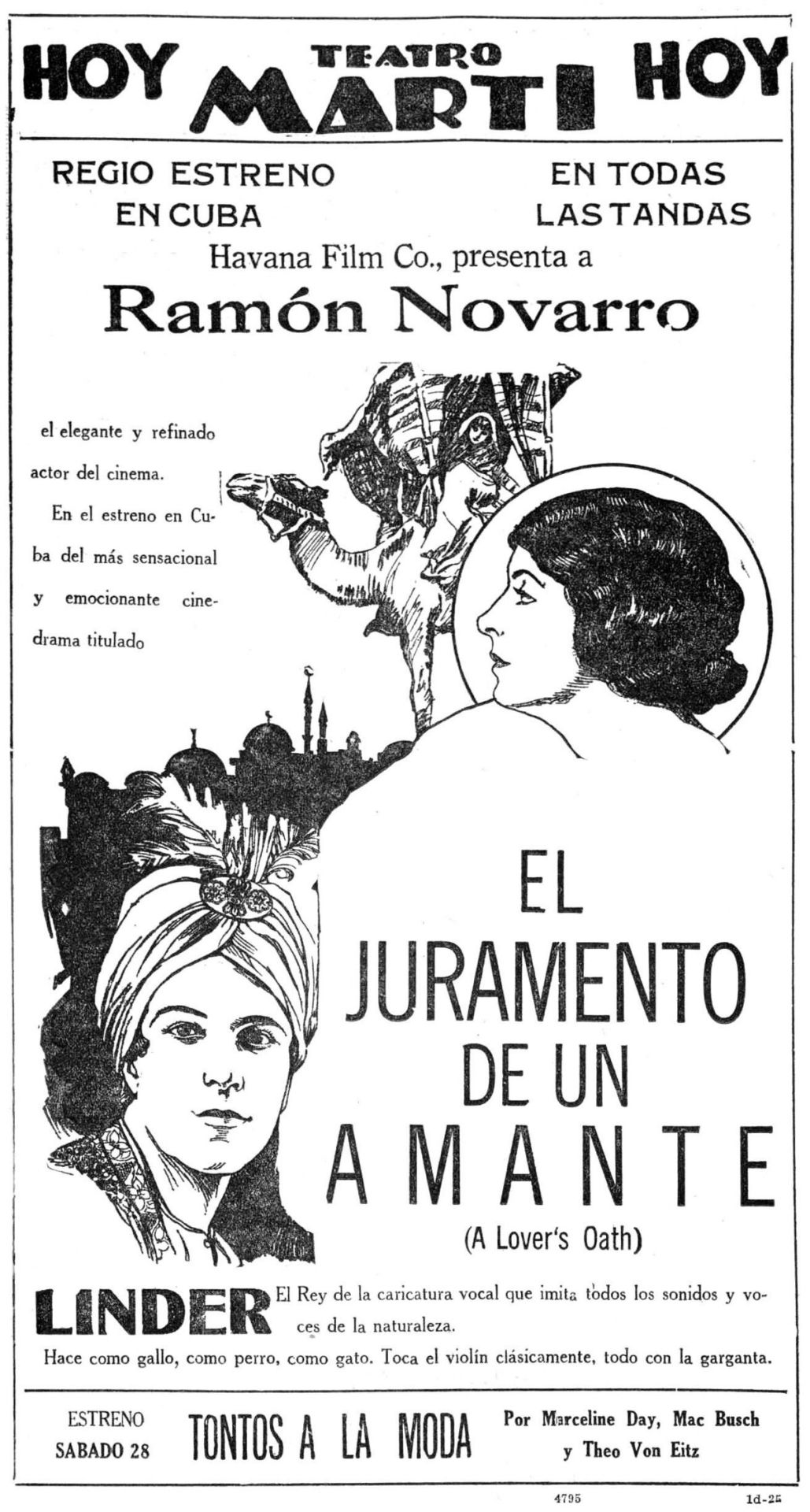
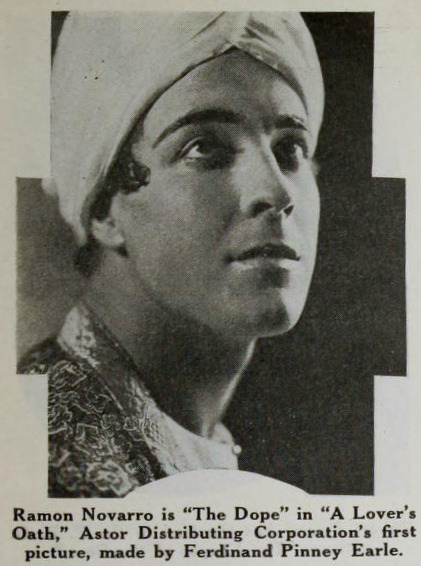
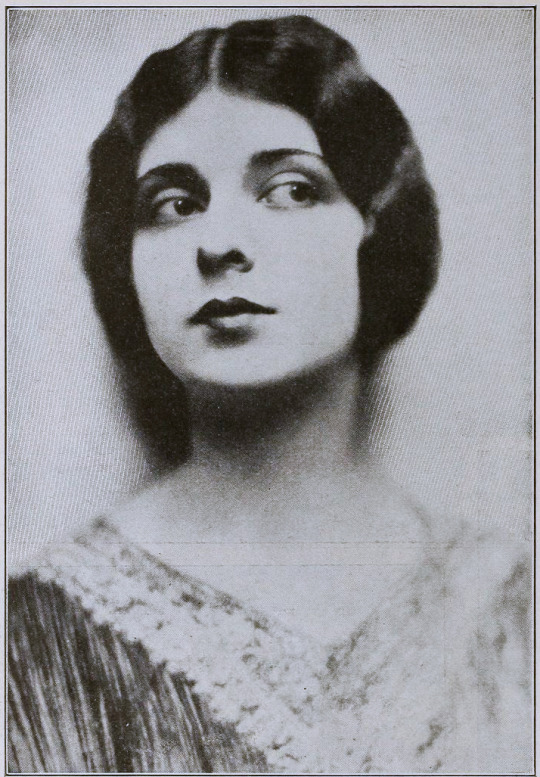
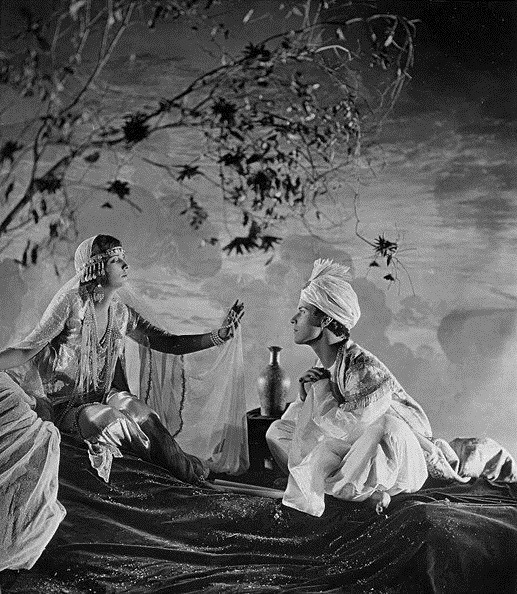
Finally I would like to highlight Ferdinand Earle’s statement to the industry, which he penned for from Camera in 14 January 1922, when his financial backers kidnapped his film to re-edit it on their terms:
MAGNA CHARTA
Until screen authors and producers obtain a charter specifying and guaranteeing their privileges and rights, the great slaughter of unprotected motion picture dramas will go merrily on.
Some of us who are half artists and half fighters and who are ready to expend ninety per cent of our energy in order to win the freedom to devote the remaining ten per cent to creative work on the screen, manage to bring to birth a piteous, half-starved art progeny.
The creative artist today labors without the stimulus of a public eager for his product, labors without the artistic momentum that fires the artist’s imagination and spurs his efforts as in any great art era.
Nowadays the taint of commercialism infects the seven arts, and the art pioneer meets with constant petty worries and handicaps.
Only once in a blue moon, in this matter-of-fact, dollar-wise age can the believer in better pictures hope to participate in a truely [sic] artistic treat.
In the seven years I have devoted to the screen, I have witnessed many splendid photodramas ruined by intruding upstarts and stubborn imbeciles. And I determined not to launch the production of my Opus No. 1 until I had adequately protected myself against all the usual evils of the way, especially as I was to make an entirely new type of picture.
In order that my film verison [sic] of the Rubaiyat of Omar Khayyam might be produced under ideal conditions and safeguarded from intolerable interferences and outside worries, I entered into a contract with the Rubaiyat, Inc., that made me not only president of the corporation and on the board of directors, but which set forth that I was to be author, production manager, director, cutter and film editor as well as art director, and that no charge could be made against the production without my written consent, and that my word was to be final on all matters of production. The late George Loane Tucker helped my attorney word the contract, which read like a splendid document.
Alas, I am now told that only by keeping title to a production until it is declared by yourself to be completed is it safe for a scenario writer, an actor or a director, who is supposedly making his own productions, to contract with a corporation; otherwise he is merely the servant of that corporation, subject at any moment to discharge, with the dubious redress of a suit for damages that can with difficulty be estimated and proven.
Can there be any hope of better pictures as long as contracts and copyrights are no protection against financial brigands and bullies?
We have scarcely emerged from barbarism, for contracts, solemnly drawn up between human beings, in which the purposes are set forth in the King’s plainest English, serve only as hurdles over which justice-mocking financiers and their nimble attorneys travel with impunity, riding rough shod over the author or artist who cannot support a legal army to defend his rights. The phrase is passed about that no contract is invioliable [sic]—and yet we think we have reached a state of civilization!
The suit begun by my attorneys in the federal courts to prevent the present hashed and incomplete version of my story from being released and exhibited, may be of interest to screen writers. For the whole struggle revolves not in the slightest degree around the sanctity of the contract, but centers around the federal copyright of my story which I never transferred in writing otherwise, and which is being brazenly ignored.
Imagine my production without pictorial titles: and imagine “The Rubaiyat” with a spoken title as follows, “That bird is getting to talk too much!”—beside some of the immortal quatrains of Fitzgerald!
One weapon, fortunately, remains for the militant art creator, when all is gone save his dignity and his sense of humor; and that is the rapier blade of ridicule, that can send lumbering to his retreat the most brutal and elephant-hided lord of finance.
How edifying—the tableau of the man of millions playing legal pranks upon men such as Charles Wakefield Cadman, Edward S. Curtis and myself and others who were associated in the bloody venture of picturizing the Rubaiyat! It has been gratifying to find the press of the whole country ready to champion the artist’s cause.
When the artist forges his plowshare into a sword, so to speak, he does not always put up a mean fight.
What publisher would dare to rewrite a sonnet of John Keats or alter one chord of a Chopin ballade?
Creative art of a high order will become possible on the screen only when the rights of established, independent screen producers, such as Rex Ingram and Maurice Tourneur, are no longer interferred with and their work no longer mutilated or changed or added to by vandal hands. And art dramas, conceived and executed by masters of screen craft, cannot be turned out like sausages made by factory hands. A flavor of individuality and distinction of style cannot be preserved in machine-made melodramas—a drama that is passed from hand to hand and concocted by patchworkers and tinkerers.
A thousand times no! For it will always be cousin to the sausage, and be like all other—sausages.
The scenes of a master’s drama may have a subtle pictorial continuity and a power of suggestion quite like a melody that is lost when just one note is changed. And the public is the only test of what is eternally true or false. What right have two or three people to deprive millions of art lovers of enjoying an artist’s creation as it emerged from his workshop?
“The Rubaiyat” was my first picture and produced in spite of continual and infernal interferences. It has taught me several sad lessons, which I have endeavored in the above paragraphs to pass on to some of my fellow sufferers. It is the hope that I am fighting, to a certain extent, their battle that has given me the courage to continue, and that has prompted me to write this article. May such hubbubs eventually teach or inforce a decent regard for the rights of authors and directors and tend to make the existence of screen artisans more secure and soothing to the nerves.
FERDINAND EARLE.
---
☕Appreciate my work? Buy me a coffee! ☕
Transcribed Sources & Annotations over on the WMM Blog!
See the Timeline for Ferdinand P. Earle's Rubaiyat Adaptation
#1920s#1923#1925#omar khayyam#ferdinand pinney earle#ramon novarro#independent film#american film#silent cinema#silent era#silent film#classic cinema#classic movies#classic film#film history#history#Charles Wakefield Cadman#cinematography#The Rubaiyat#cinema#film#lost film
41 notes
·
View notes
Text
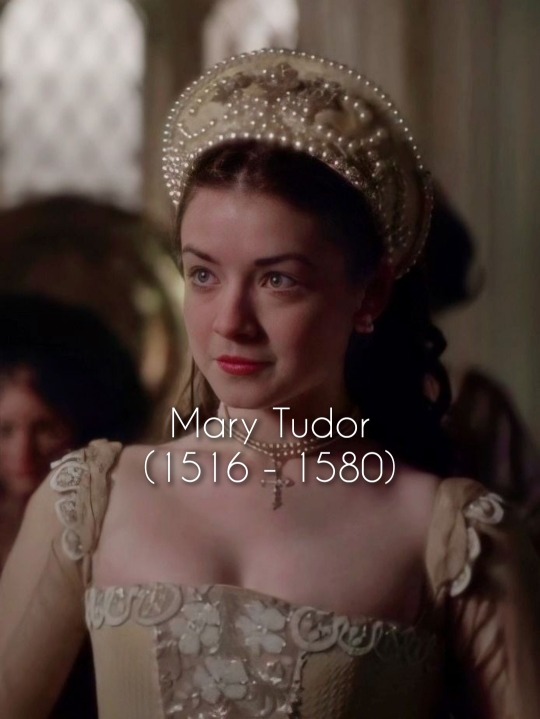

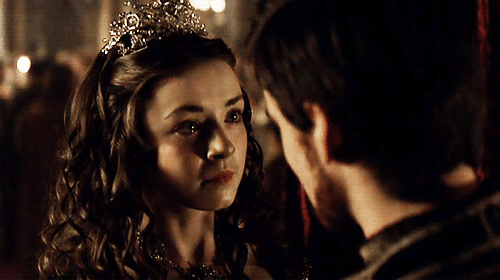

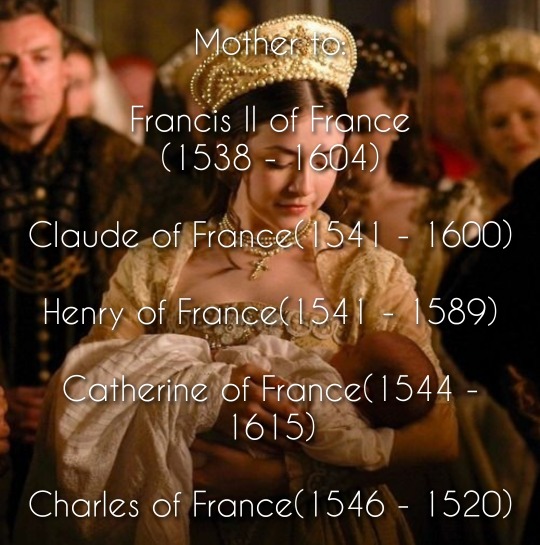

A happier life for Henry VIII's children. Part: 1.
Mary was the first surviving child of King Henry VIII of England from his first marriage to the Spanish princess Catherine of Aragon. The princess knew that she was not her parents' only child - all of her siblings died shortly after birth. The birth of a living and healthy child was a great happiness for King Henry and Queen Catherine, even though the child was a girl. That is why she became the king's favorite daughter. When she was 12 years old, her father decided to divorce her mother. Catherine did not resist the king's decision for a long time, but accepted the inevitable and agreed to the divorce with favorable terms. For this, the king, as promised, retained for Mary the status of princess and allowed the former spouse to communicate with his daughter. After the divorce for Mary little changed, she continued to grow up in the love of her father and mother, often visited both parents. The princess did not like her father's second wife, but did not show it. Anne Boleyn did not meet Henry's expectations, so he sent her to a convent under strict supervision. The king also wanted to declare Princess Elizabeth illegitimate, but Mary stood up for her sister and convinced her father not to do so. Soon the king married Jane Seymour, and a year after the wedding she gave him a long-awaited son, whom the happy father named Edward. In honor of this joyous event, Henry organized a grand feast that lasted for a whole week. In the same year, Princess Mary married Prince Henry, heir to the French throne. Before meeting his future wife, the dauphin had a love affair with Diana de Poitiers, but when he first saw his betrothed, he fell madly in love with her. Henry immediately severed all ties with Diana and was faithful to his wife until his death. The marriage of Mary and Henry turned out to be very happy. They had five children:
Francis II of France(1538 - 1604). Nicknamed "The Peacemaker" for the foreign policy calm during his reign. During his reign, France did not wage a single war. Husband of Helena of Austria, they had a good relationship. In marriage 7 children were born: Mary, Louis XIII, Anne, Henry, Christina, Philip, Gaston.
Claude of France(1541 - 1600). Queen of Spain. In 1556 she became the wife of Philip II. The spouses loved each other despite the big difference in age. They had 5 children: Philip III, Isabella, Joanna, Ferdinand, Diego.
Henry of France(1541 - 1589). Duke of Orleans. Was a favorite son for his mother, as from a young age showed a keen interest in religion. And when he became older he decided to devote his life to the service of God. He was not married and had no children.
Catherine of France(1544 - 1615). Archduchess of Austria. Favorite sister of Francis II. Was the second wife of Ferdinand II of Austria. The spouses did not love each other, but respected each other. In marriage 3 daughters were born: Anne, Mary, Eleanor. After the death of her husband returned to her homeland.
Charles of France(1546 - 1620). Duke of Angoulême. Because of his dissolute lifestyle he had conflicts with his mother. He married his cousin Jane, daughter of King Edward VI of England. The married life of Charles and Jane was not happy, because of his constant cheating. The marriage produced 4 children: Gedeon, Charlotte, Michelle and Cesar.
While in France, she did not forget about her family and maintained a close correspondence not only with her parents, but also with her second stepmother, because of the warm and close relationship between them. Before leaving, Mary and Jane had great difficulty convincing the king to bring Elizabeth to the palace so that she would not feel lonely. Henry initially had no paternal feelings for his second daughter, but was later able to develop a warmth for the girl. In 1540, Dauphine learned that her mother had died. She could not come to her funeral, as she was pregnant with her second child, but due to severe stress she had a miscarriage. Because of these events, the princess fell into depression, she did not leave her chambers and hardly ate anything. Her husband was with her all this time and provided as much support as possible, but when he realized that he could not cope, he invited Jane to help. She couldn't stay away and convinced Henry to let her go to Mary. After a few months, Mary recovered and all three returned to England. The king greeted his wife, daughter and son-in-law warmly. And the princess was finally able to honor her mother. She also spent time with her brother and sister because she missed them during the 6 years of absence. When Mary returned to France, she was already pregnant with her third child, and nine months later she gave birth to twins. Five years passed.During this time, Mary and Henry became king and queen of France and had two more children. They successfully ruled the kingdom. Shortly before his death, Henry 8 appointed his eldest daughter as regent under his young son. The queen excelled in her duties as regent and pursued a mild policy toward her subjects. When she realized that Edward was already capable of ruling on his own, she placed the power in his hands and returned to France. In 1559, King Henry of France fell from his horse while hunting and died. Mary mourned the death of her beloved husband for a long time and wore mourning for him for the rest of her life. She warmly remembered the 22 happy years they gave to each other and loved to tell her grandchildren about it. Mary often came to visit her brother, and the two developed a warm relationship. The dowager queen of France died in 1580. She was buried next to her husband Henry II in the Abbey of Saint-Denis.
Source:
Pinterest: Dinastia Tudor & Reyes Católicos, Bit_na
Tumblr: the borgias ITALIA
#history#royal family#royalty#history au#au#royal#henryviii#the tudors#british royal family#16th century#catherine of aragon#anne boleyn#jane seymour#marytudor#house of tudor#tudor dynasty#tudor england
10 notes
·
View notes
Text
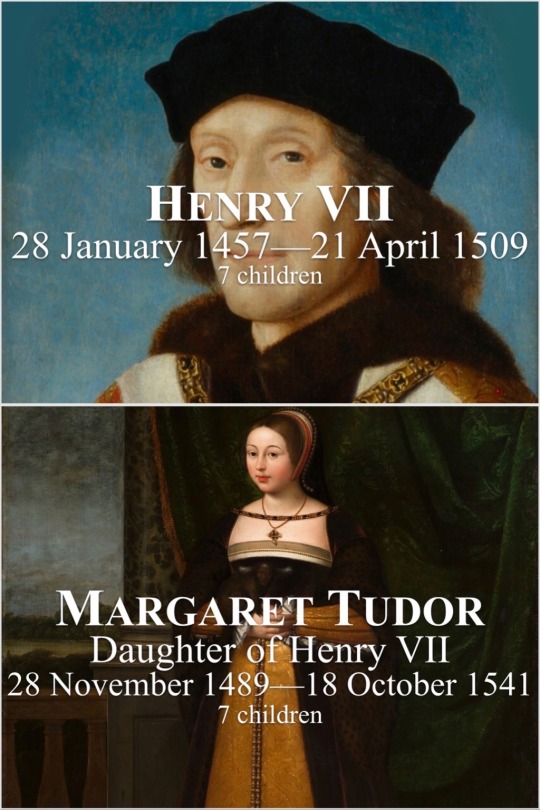





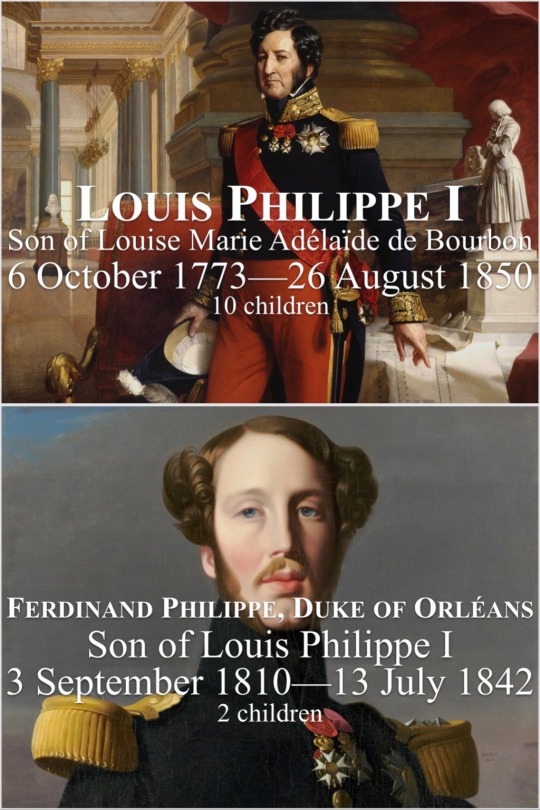

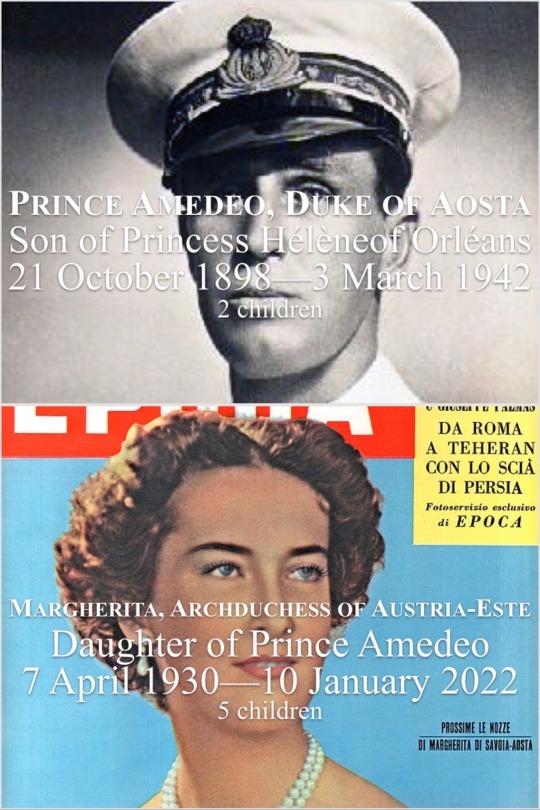

Descendants of the Tudors
#descendants of the tudors#henry vii#margaret tudor#james v#mary queen of scots#james vi and i#elizabeth stuart#charles i louis#elizabeth charlotte madame palatine#philippe ii duke of orléans#charlotte aglaé d’orléans#maria teresa felicitas d’este#louise marie adélaïde de bourbon#louis philippe i#ferdinand philippe duke of orléans#prince philippe count of paris#princess hélène of orléans#prince amedeo duke of aosta#margherita archduchess of austria este#prince lorenz#prince amedeo
4 notes
·
View notes
Note
Who do you think are the 3 most beautiful granddaughters of Queen Victoria?
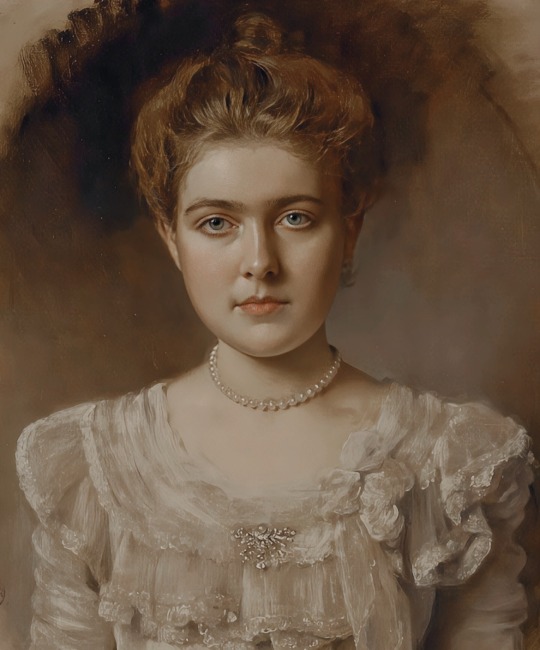
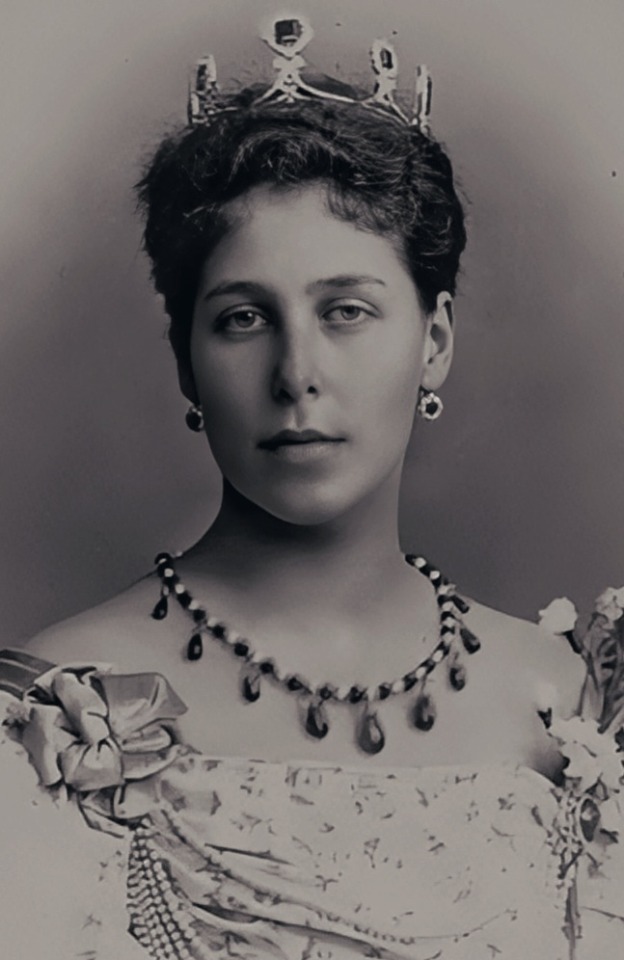
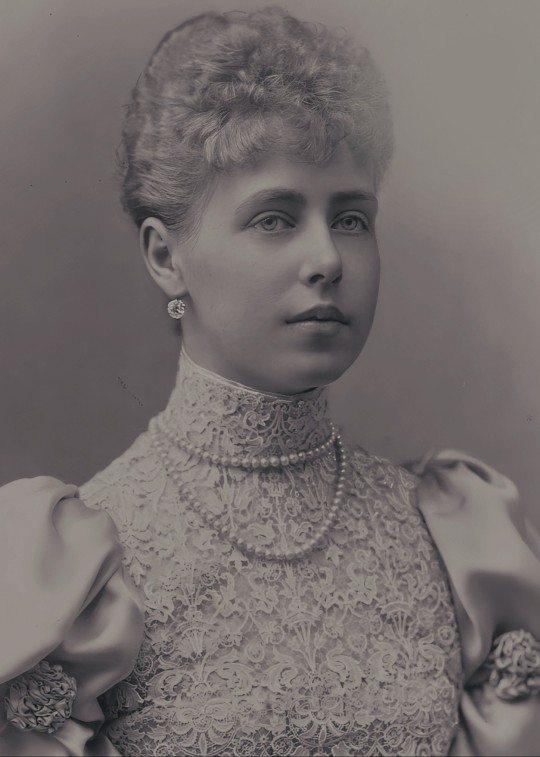
Beauty is a subjective matter, and different people may have different preferences and tastes.
I'm sure that all the granddaughters of Queen Victoria are beautiful and unique in their own way... 💓🫶🥺 However, in my opinion, 3 of the most beautiful granddaughters of Queen Victoria are included:
- Princess Margaret of Connaught (1882–1920) was the daughter of Prince Arthur, Duke of Connaught and Strathearn, the third son of Queen Victoria and Prince Albert. She married Prince Gustaf Adolf of Sweden, the future King Gustaf VI Adolf, in 1905 and became the Crown Princess of Sweden. She was known for her beauty, intelligence, and charm, and was popular among the Swedish people. She died in 1920, at the age of 38.
- Princess Victoria Melita of Edinburgh (1876–1936) was the daughter of Prince Alfred, Duke of Edinburgh and Saxe-Coburg and Gotha, the second son of Queen Victoria and Prince Albert. She married twice: first to her cousin Ernest Louis, Grand Duke of Hesse; and second to another cousin Kirill Vladimirovich, Grand Duke of Russia. She was considered a beauty in her youth, with dark hair and blue eyes. She was also interested in music and art, and supported her husband's claim to the Russian throne after the revolution.
- Princess Marie of Edinburgh (1875–1938) was the daughter of Prince Alfred, Duke of Saxe-Coburg and Gotha. She married King Ferdinand I of Romania in 1893. She was admired for her beauty, elegance, and style, and was nicknamed "the pearl of the crown" by the Romanian people. She was also a patron of arts and culture, and a humanitarian who helped refugees.
22 notes
·
View notes